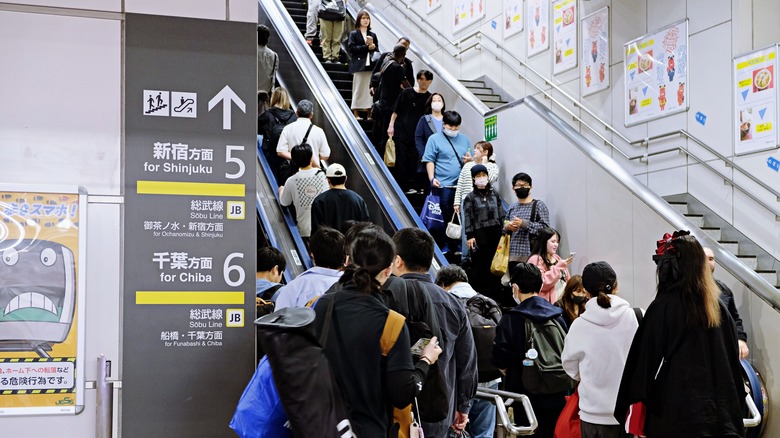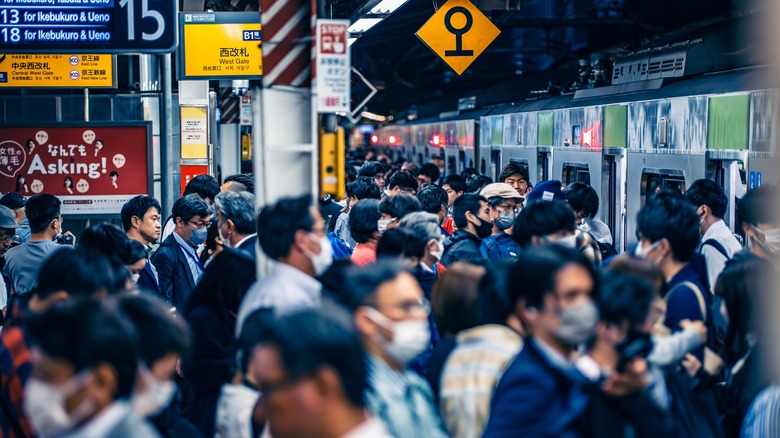The Unspoken Escalator Etiquette Rule In Japan Tourists Should Know Before Visiting
A trip to Japan is on just about everybody's bucket list. From the vibrant metropolis of Tokyo, with its high energy, fashion inspiration, narrow restaurant-lined alleys, and dreamy skyline, to the temples and tea houses of Kyoto, to this postcard-perfect village with a population of one. Japan is also famous for its very polite society with deep-rooted cultural norms. They're such a well-mannered people that the Japanese fans went viral for cleaning up the stadium at the World Cup in 2022.
Being such a polite culture, it's wise to do a bit of research before hopping on a flight to know how to be a considerate tourist when visiting Japan. One should especially avoid public displays of affection as it's an etiquette mistake that will make you stand out for all the wrong reasons. If you're respectful in general while traveling, most things aren't that grave, and locals usually understand tourists aren't fully aware of all the social norms.
Some etiquette rules apply broadly to other countries, like not being too loud and obnoxious in public — none of us wants to be that tourist. Others are a little more Japan-specific, like this unspoken rule tourists should know about where to stand on an escalator. In the U.S., similar to slower drivers on the highway or people standing rather than strolling on the walkways in airports, our tendency would be to move to the right to allow others to pass. On escalators in most of Japan, it's the opposite. They stand on the left side and allow walkers to pass on the right. Except in the Kansai region, where, for historical reasons, it switches to standing on the right.
Regional differences in escalator etiquette rules
Japan is a nation that places a high value on public order and social harmony. That can be especially important in transportation hubs. Cities move at a high pace. Commuters have somewhere to be. As tourists, we want to blend in and merge with the flow as best we can. Knowing the regional escalator etiquette rules can help. As mentioned, in most regions of Japan, they stand on the left side of the escalator and allow people to pass on the right. That's what you'll see in Tokyo. If you then took a train to the Kansai region that includes the cities of Kobe, Osaka, Kyoto, Nara, and Wakayama, you'll notice that they stand on the right.
Kansai is known for its unique dialect and is a region that is proud of its independent customs and traditions. The theory for the escalator etiquette switch-up goes back to when Osaka held the World Expo in 1970. It was a massive event, 77 countries participated, and a staggering 64 million people visited, which was an attendance record the Osaka Expo held until 2010. It is said that when they invited so many people from around the world to their region, they mirrored the European norm of standing on the right side of escalators, and it stuck.
No matter where you are in Japan or the world, it's always good to be observant and take cues from what the locals are doing. Respect those around you, and if you're unsure of what to do, follow the crowd. On escalators in Tokyo, you'll see locals standing on the left. In Kansai, they'll be on the right. It's not just a quirk; it's part of their regional pride.

